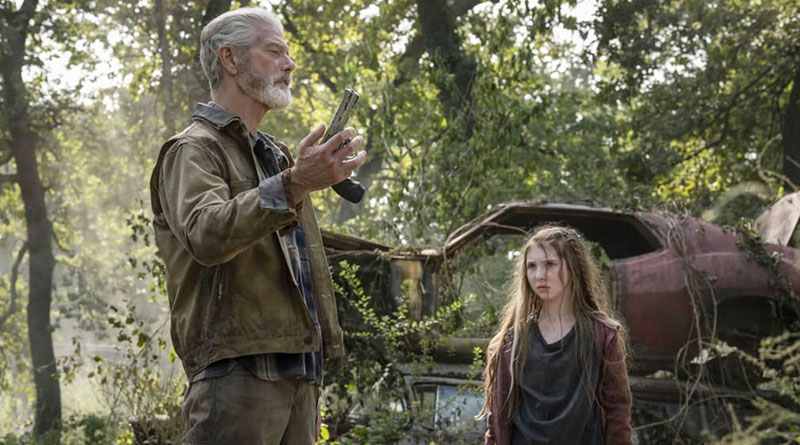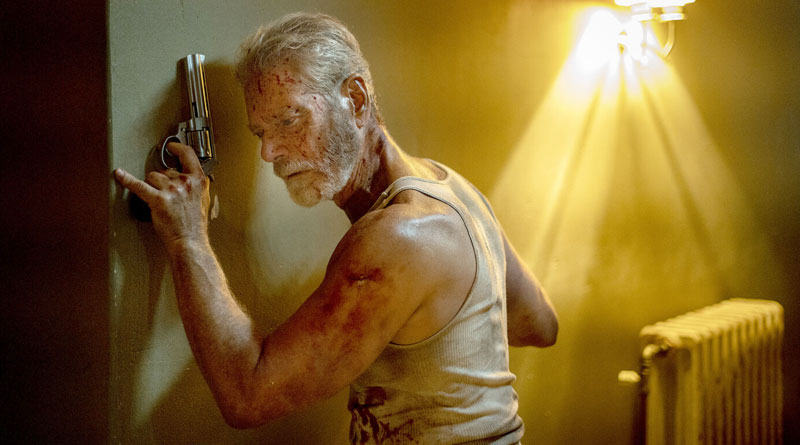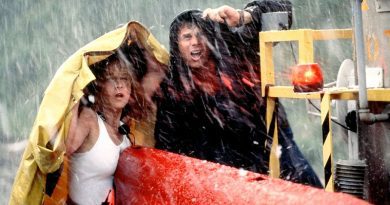Don’t Breathe 2 (2021) Review
The first Don’t Breathe is a nasty, if erratic little thriller that offers us a fresh twist to the oft-seen home-invasion thriller subgenre. The film even famously introduced a memorable blind-man antagonist played by the scene-stealing Stephen Lang. Too bad the film also made an ill-advised move by giving us an unnecessary open ending — something that I personally felt it should have been left alone as it is (read: one-off).
Like it or not, the sequel is here anyway, thanks to the first film’s largely positive responses and the fact it became a surprise hit, grossing over US$157 million worldwide against a measly US$9.9 million budget. This time, Don’t Breathe 2 follows The Blind Man a.k.a. Norman Nordstrom (Stephen Lang), who is now residing in another rundown home after the events of the first film eight years ago. He also lives with an 11-year-old girl named Phoenix (Madelyn Grace) and his beloved dog, Shadow. The girl in question turns out to be his daughter and he is so overprotective of her to the point he keeps her on a tight leash. So, instead of living her life like any other normal teenager, she spends most of her time engaging in survival training of sorts. Norman does allow her to go to town once in a while, where she gets to accompany his friend and former US Army Ranger, Hernandez (Stephanie Arcila) to run an errand.
However, their secluded life ends abruptly when a group of criminals led by Raylan (Brendan Sexton III) invade Norman’s house to kidnap Phoenix for a reason that I don’t want to venture into spoiler territory here.
Don’t Breathe 2 gets off to a slow start that supposedly takes its time to establish the father-daughter relationship between Norman and Phoenix. But Rodo Sayagues, taking over from Fede Alvarez in his directorial debut isn’t much of a competent storyteller when comes to the character-driven drama. I find it difficult to root either of them and I’m not sure humanising Norman is a good idea either. Besides, remember what he did in the first film?

Still, Sayagues manages to regain his footing once the home invasion takes place. This is where he excels the most, notably in the way he moves his camera to build up a sense of escalating tension. There is even an excellent setpiece worth mentioning here — a seemingly unbroken long takes involving Phoenix trying her best to evade the kidnappers, who already breaking into their house. No doubt Sayagues’ technical prowess alone makes the whole home invasion sequence a gripping piece of entertainment, even though he repeats the same storytelling beats from the first film. Kudos also go to the great sound design as well as the use of silence and Roque Baños’ tense score. Sayagues doesn’t skimp on the brutality and violence too, with one particular scene involving the use of super glue.
Stephen Lang remains a commanding presence in this sequel. But as mentioned earlier, it’s a pity that Sayagues and Alvarez’s decision of making him a sympathetic anti-hero doesn’t do him much of a favour. Madelyn Grace fares better in her solid supporting turn as Phoenix and I like the way she showcases her range of emotion throughout the film. This is clearly her well-deserved big break after appearing in several TV series such as Grey’s Anatomy and The Orville. The rest of the cast, however, is rather forgettable except for Brendan Sexton III, who made quite an impression playing the menacing leader of the group.
Then comes the second half, where Sayagues tries to amp up the sequel with a gradual twist involving why the criminals are so determined to kidnap Phoenix at all cost. Unfortunately, the twist is somehow bizarre and silly once you get to know the reason. Putting that aside, the rest of the film outside of the home invasion sequence subsequently loses steam as it goes along. If that’s not enough, the sequel even ends with a mid-credits scene that teases us a possible third film.





